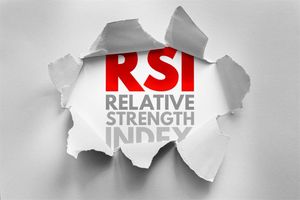
Industrial manufacturing company Ingersoll Rand (NYSE: IR) met Wall Street’s revenue expectations in Q1 CY2025, with sales up 2.8% year on year to $1.72 billion. Its non-GAAP profit of $0.72 per share was 2.6% below analysts’ consensus estimates.
Is now the time to buy IR? Find out in our full research report (it’s free).
Ingersoll Rand (IR) Q1 CY2025 Highlights:
- Revenue: $1.72 billion vs analyst estimates of $1.72 billion (2.8% year-on-year growth, in line)
- Adjusted EPS: $0.72 vs analyst expectations of $0.74 (2.6% miss)
- Adjusted EBITDA: $459.7 million vs analyst estimates of $473 million (26.8% margin, 2.8% miss)
- Management lowered its full-year Adjusted EPS guidance to $3.34 at the midpoint, a 2.9% decrease
- EBITDA guidance for the full year is $2.1 billion at the midpoint, below analyst estimates of $2.14 billion
- Operating Margin: 17.6%, in line with the same quarter last year
- Free Cash Flow Margin: 13%, up from 5.9% in the same quarter last year
- Organic Revenue fell 3.9% year on year (-0.8% in the same quarter last year)
- Market Capitalization: $33.49 billion
StockStory’s Take
Ingersoll Rand opened the year with revenue growth in line with Wall Street expectations but delivered non-GAAP earnings per share slightly below consensus, as management cited both operational investments and a shift in revenue timing. CEO Vicente Reynal pointed to a 10% increase in total orders and strong free cash flow generation, highlighting ongoing momentum in aftermarket and recurring revenue streams. However, management acknowledged that organic revenue fell compared to last year, with Reynal emphasizing, “We decided to take a prudent view by maintaining total revenue consistent with prior guidance despite the tailwinds we’re seeing.”
Looking ahead, Ingersoll Rand lowered its full-year profit outlook, with management taking what they described as a “precautionary” approach to organic volume assumptions. CFO Vik Kini said the company’s updated guidance reflects anticipated impacts from new tariffs and a deliberate contingency for lower organic volumes. Management stressed that pricing actions and supply chain adjustments should largely offset tariff costs, but acknowledged that these headwinds—along with ongoing investments and a dynamic global environment—are expected to weigh on margins and earnings through the rest of the year.
Key Insights from Management’s Remarks
A combination of cautious guidance and strategic initiatives shaped Ingersoll Rand’s first quarter narrative, as management balanced solid order momentum against new challenges.
- Order Growth and Aftermarket Expansion: Management reported a 10% increase in total orders and highlighted a 6% growth in aftermarket revenue, which now makes up 38% of total revenue. This growth in recurring and service-related income is seen as a stabilizing factor for the business.
- Tariff Impact and Mitigation: The company outlined a $150 million tariff exposure for the year, stemming primarily from China-related imports. Management described a multi-step pricing and surcharge strategy to offset these impacts, while also launching a "tariff war room" to accelerate supply chain adjustments.
- M&A as a Core Strategy: Ingersoll Rand closed six bolt-on acquisitions already this year, targeting smaller, in-region companies to enhance technology portfolios and regional capabilities. Management reiterated that disciplined M&A remains the top capital allocation priority.
- Segment Performance Divergence: The Precision and Science Technologies (PST) segment saw 23% revenue growth, largely acquisition-driven, while Industrial Technologies and Services (ITS) experienced a 2% revenue decline. However, both segments reported organic order growth, with particular strength in Asia Pacific and Europe.
- Cost Control and Operational Initiatives: Management emphasized ongoing initiatives like the Innovate 2 Value (I2V) process, which aims to harmonize product components and reduce costs—citing a recent 23% cost reduction in North American compressors as a tangible result.
Drivers of Future Performance
Management’s outlook for the rest of the year centers on cautious volume assumptions, tariff mitigation efforts, and continued execution of its acquisition strategy.
- Tariff Pass-Through and Supply Chain Shifts: The company expects to offset tariff-related costs via targeted price increases and surcharges, but acknowledges that cost mitigation actions such as supplier relocation will take time to implement and may not have material impact this year.
- Acquisition Integration and Revenue Mix: Recently completed bolt-on acquisitions are expected to drive inorganic revenue growth and help diversify the business, particularly in high-growth regional and technology segments.
- Macro and Volume Uncertainty: Management flagged low single-digit declines in organic volume for the back half of the year and included a 4% volume contingency in guidance, citing a desire to “de-risk” amid a volatile operating environment. Risks include lingering tariff uncertainty and the pace of customer decision-making in key end markets.
Top Analyst Questions
- Mike Halloran (Baird): Asked if lower organic volume guidance was a proactive precaution. Management confirmed the guide is "prudent," reflecting caution rather than any deterioration in order trends.
- Julian Mitchell (Barclays): Queried seasonality and margin outlook. CFO Vik Kini said organic growth trends should improve in the second half, with flat margins overall as tariff pricing creates zero flow-through.
- Jeff Sprague (Vertical Research Partners): Sought detail on tariff mitigation beyond pricing. Management highlighted ongoing supply chain changes, noting cost mitigation is not yet included in guidance but remains a focus.
- Joe O'Dea (Wells Fargo): Questioned the rationale for a 4% volume contingency and which areas are most vulnerable. Management said the contingency is spread across segments, with no single product line or market singled out.
- Chris Snyder (Morgan Stanley): Asked if strong Q1 orders reflected pull-forward ahead of tariffs. Management responded there was no evidence of customer stockpiling, citing the customized nature of most products.
Catalysts in Upcoming Quarters
In the coming quarters, the StockStory team will focus on (1) the effectiveness of Ingersoll Rand’s pricing and supply chain actions in fully mitigating tariff pressures, (2) the integration and performance of recent bolt-on acquisitions in driving both revenue and margin improvement, and (3) trends in organic orders and volume, especially as management’s guidance assumes ongoing caution in customer demand. Progress on cost reduction initiatives and recurring revenue expansion will also be key markers of execution.
Ingersoll Rand currently trades at a forward P/E ratio of 24×. Is the company at an inflection point that warrants a buy or sell? Find out in our free research report.
Stocks That Trumped Tariffs in 2018
Market indices reached historic highs following Donald Trump’s presidential victory in November 2024, but the outlook for 2025 is clouded by new trade policies that could impact business confidence and growth.
While this has caused many investors to adopt a "fearful" wait-and-see approach, we’re leaning into our best ideas that can grow regardless of the political or macroeconomic climate. Take advantage of Mr. Market by checking out our Top 9 Market-Beating Stocks. This is a curated list of our High Quality stocks that have generated a market-beating return of 176% over the last five years.
Stocks that made our list in 2020 include now familiar names such as Nvidia (+1,545% between March 2020 and March 2025) as well as under-the-radar businesses like the once-micro-cap company Tecnoglass (+1,754% five-year return). Find your next big winner with StockStory today.




